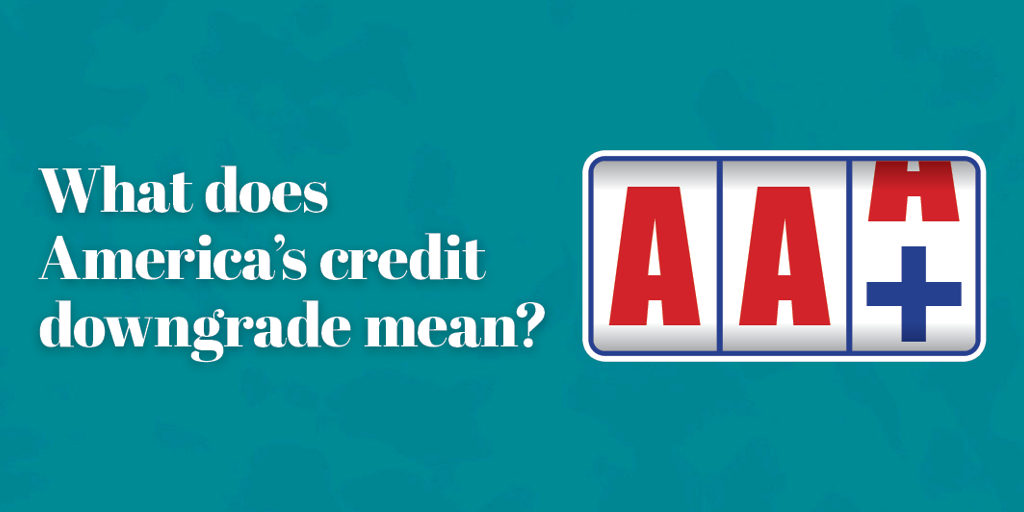


What does America’s credit downgrade mean?
On August 1, Fitch Ratings, one of the three primary credit rating agencies, downgraded the United States’ long-term credit rating from AAA to AA+, the second downgrade of U.S. debt in 12 years. A downgrade from AAA to AA+ is roughly the institutional equivalent of a drop in an individual’s FICO score from 850 to 830. The credit is still excellent, and the slight drop should not materially impact borrowing costs. But the warnings in the report should not be ignored, and there is a very good case to be made that the AA+ rating is overly generous.
Why should we care?
The U.S. financial condition is worse than the AA+ credit rating would suggest and continues to deteriorate. According to the Bureau of Economic Analysis (BEA), the government collected $7.6 trillion in total receipts and had $9.1 trillion in expenditures, resulting in $1.47 trillion in net borrowing (the deficit) in 2022. Forecasts for 2023 put net borrowing even higher. This level of deficit spending is usually only seen in times of war or deep recession.
For much of the 21st century, the government was able to borrow at interest rates near 1%. Now, thanks to inflation, borrowing is at 5% or higher. Higher interest expenses result in more government expenditure, which results in even more deficit spending, which requires even more borrowing. We can quickly see the issue here.
So, what happens when the government runs out of money? It can just create more. Technically, this is not allowed, but the Treasury and Federal Reserve have developed a work-around via open-market operations. This new money comes at a cost though. When you create money faster than you grow GDP, you have more dollars chasing fewer goods, resulting in higher prices.
What should you do to protect your assets?
The U.S. has its fiscal issues, but currency value is a relative game not an absolute one. No other country or union has the size, liquidity, and stability of the United States. The threat is not a collapse of the dollar, but a consistent and potentially accelerating loss in purchasing power and the erosion in quality of life as inflation consumes more and more of our discretionary budget.
To protect your purchasing power, buy assets that have positive cash flows. Stocks and income-producing assets will have earnings that will grow in nominal dollars, meaning that as inflation grows, so does your cash flow and eventually the assets’ value. You should also own assets that cannot be duplicated – physical gold, premium real estate, even fine art. Know that some of these suffer from limited liquidity and unique storage challenges.
Many argue that crypto serves as a hedge against currency dilution. Again, the “cannot be duplicated” criteria apply here. One could argue that Bitcoin has value because of its known scarcity and broad acceptance, while other random coins are of little long-term value.
Investors need to recognize that the entity issuing the U.S. debt also makes the rules of commerce. The government has a vested interest in supporting its spending needs; therefore, protecting your purchasing power requires constant diligence.
Warren Hurt is chief investment officer for F&M Trust.
Recent Articles
Join our e-newsletter
Sign up for our e-newsletter to get new content each month.






















